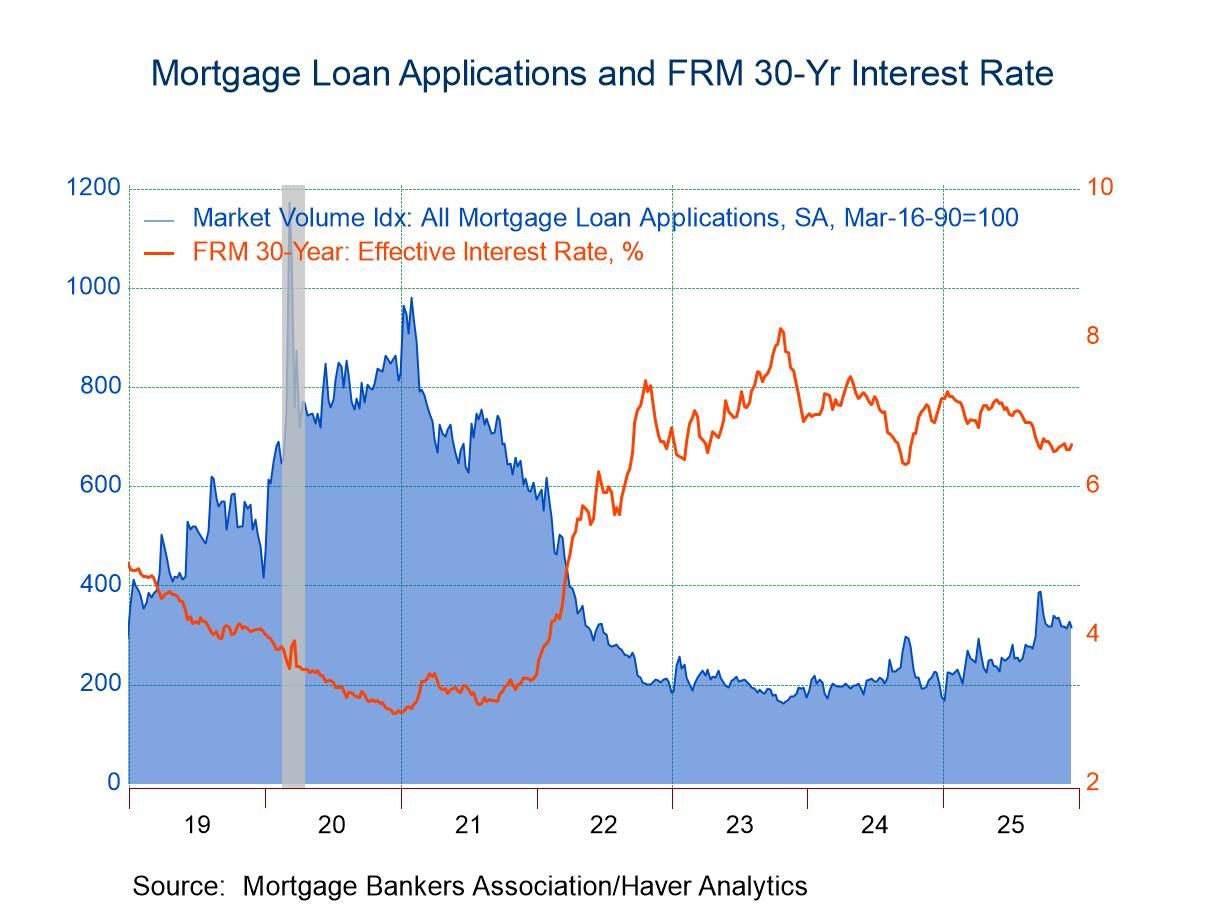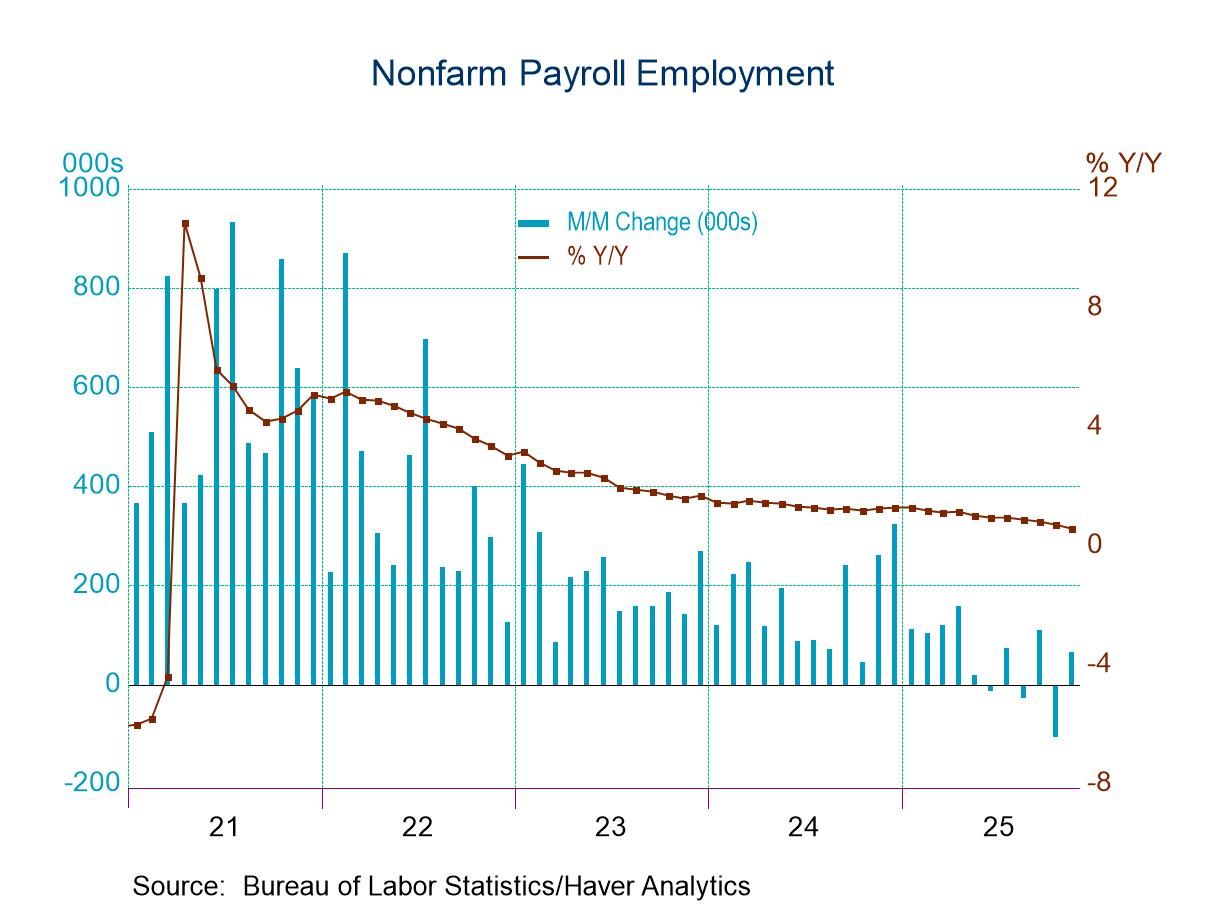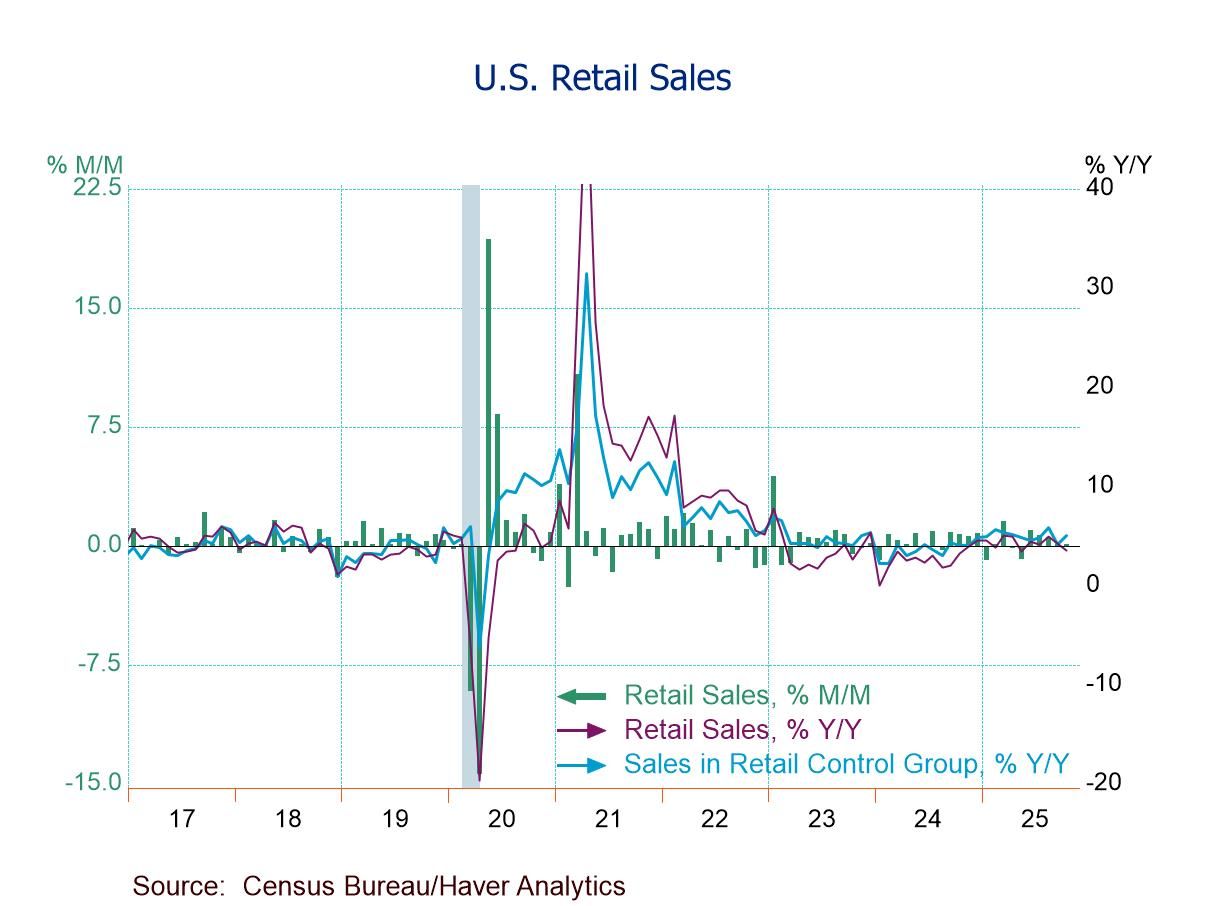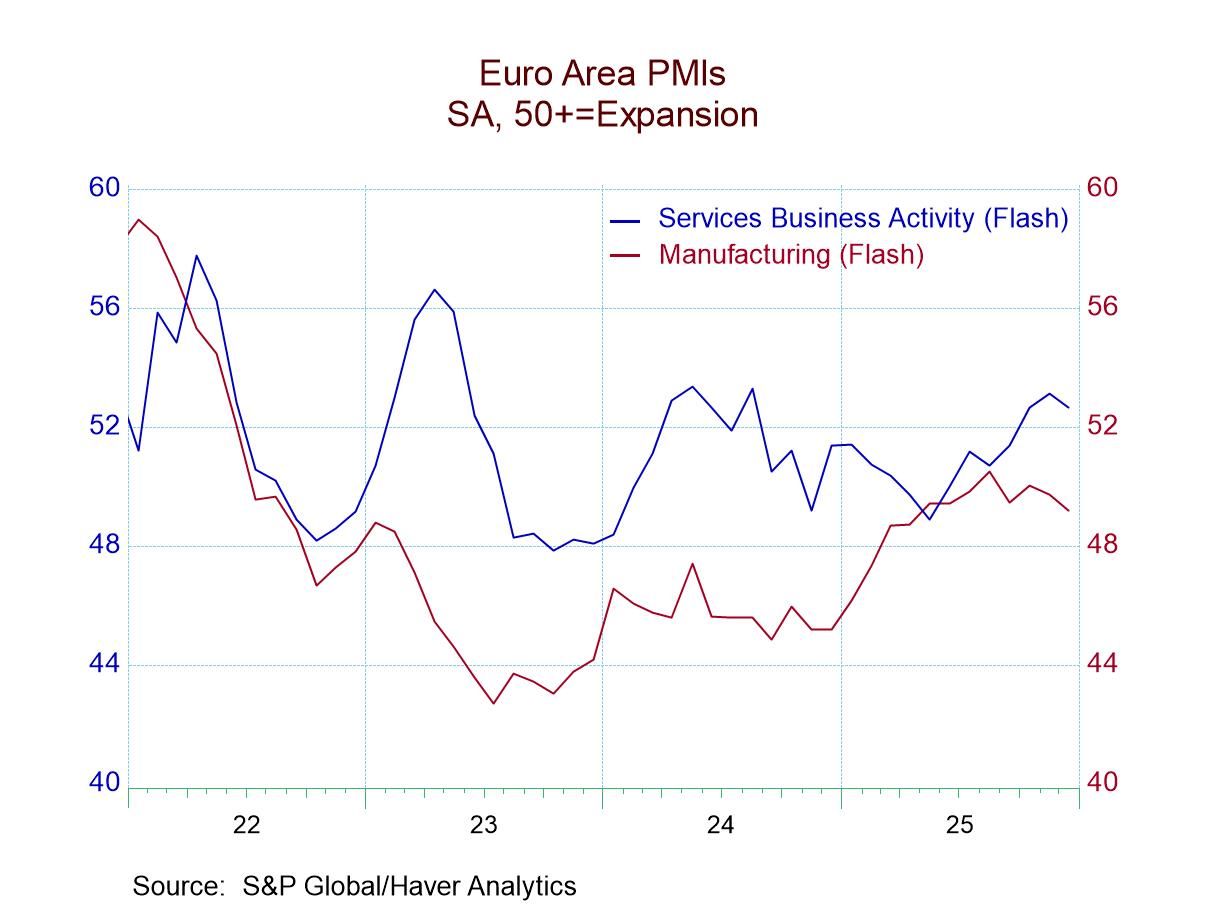U.S. Industrial Production Rises in June After Holding Steady for Two Months
Summary
- June IP +0.3% (+0.7% y/y), led by a 2.8% rebound in utilities output.
- June IP Index at the highest level since Dec. ’18.
- Mfg. IP +0.1%, w/ durables unchanged and nondurables up 0.3%.
- Mining activity -0.3%, the second m/m fall in three months.
- Key categories in market groups all increase.
- Capacity utilization up 0.1%pt. to 77.6%; mfg. capacity utilization up 0.1%pt. to a 3-month-high 76.9%.
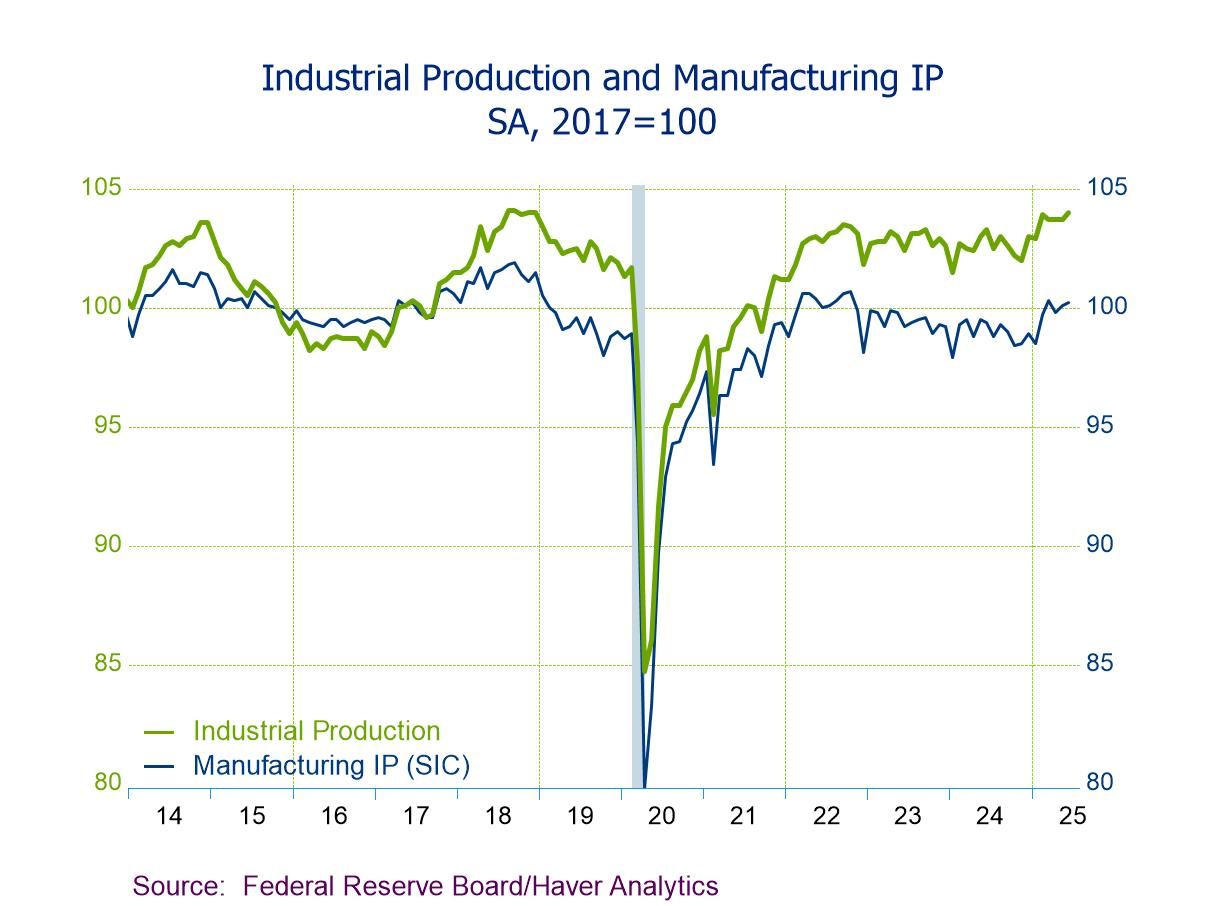
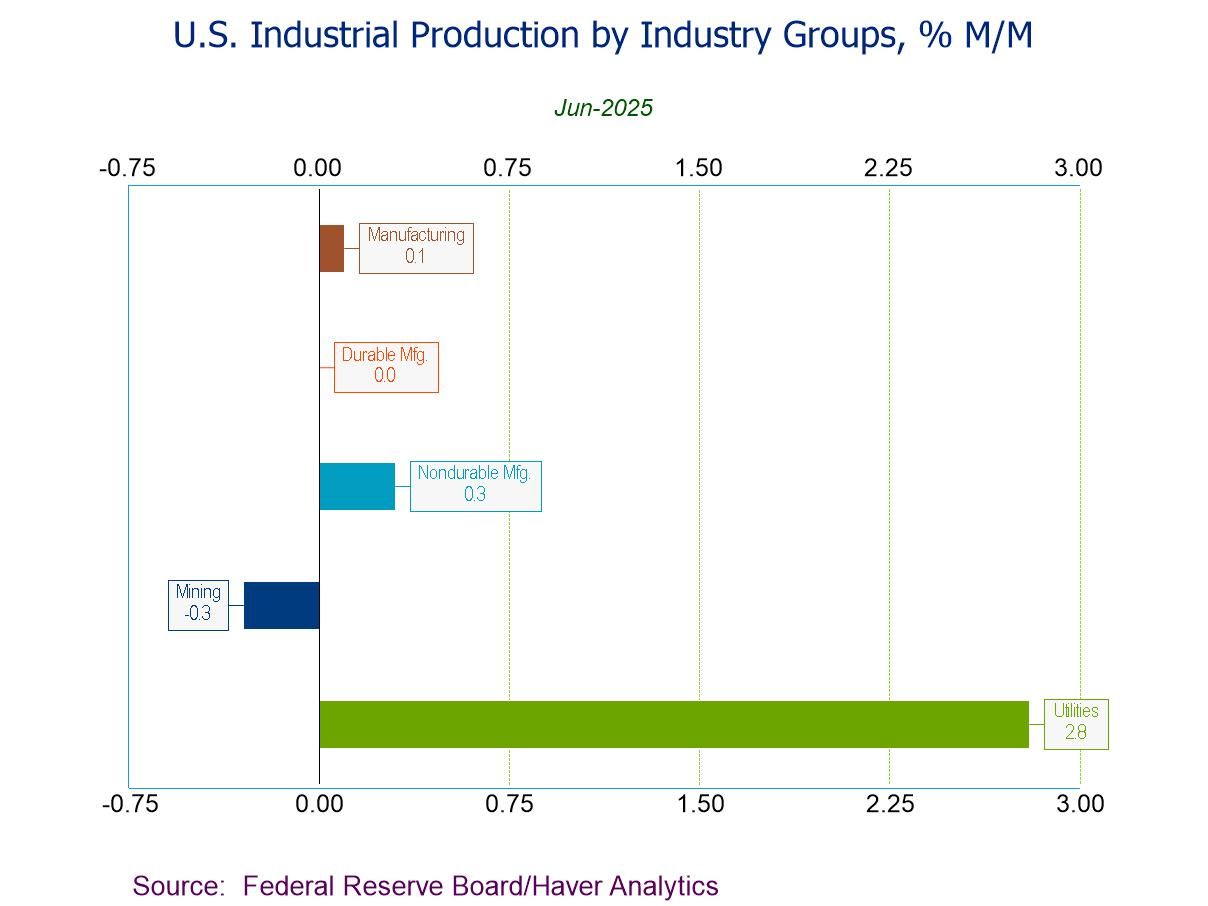
Industrial production (IP) increased a more-than-expected 0.3% m/m in June after no change in May (-0.2% initially) and April (+0.1% previously), data from the Federal Reserve Board showed. A 0.1% m/m June uptick had been expected in the Action Economics Forecast Survey. The year-on-year rate of increase picked up to 0.7% in June after decelerating to 0.6% in May (lowest since December); however, it was down from +1.6% y/y in June 2024. The June IP index was at 104.0, the highest since December 2018 and 2.5% above a low of 101.5 in January 2024.
By industry groups, manufacturing production edged up 0.1% (0.8% y/y) in June, the fourth m/m increase in five months, after an upwardly revised 0.3% rise in May (+0.1% initially). Durable goods production was essentially unchanged (+1.5% y/y) in June following a 0.7% rebound in May. Within durables, the following categories fell m/m in June, including output drops of 2.6% (-2.2% y/y) in motor vehicles & parts, 2.5% (-1.7% y/y) in electrical equipment, appliances & components, 0.9% (+2.8% y/y) in wood products, and 0.2% (-1.2% y/y) in fabricated metal products. To the upside, the following durable goods categories rose m/m in June, including output rises of 3.1% (5.0% y/y) in primary metals, 1.6% (5.4% y/y) in aerospace & miscellaneous transportation equipment, 1.3% (-1.9% y/y) in furniture & related products, 0.8% (3.3% y/y) in machinery, 0.6% (1.6% y/y) in nonmetallic mineral products, 0.2% (6.6% y/y) in computer & electronic products, and 0.1% (-1.9% y/y) in miscellaneous durables goods. Notably, aircraft & parts production climbed 1.8% (9.1% y/y) in June, the eighth straight m/m rise, on top of a 0.7% increase in May.
Nondurable goods production rose 0.3% (0.4% y/y) in June, the first m/m rise in three months, following a 0.1% dip in May. The June rise reflected m/m output increases of 2.9% (0.7% y/y) in petroleum & coal products, 0.5% (-5.1% y/y) in apparel & leather goods, and 0.2% (-0.8% y/y) in food, beverages & tobacco. To the downside, the following nondurable goods categories fell m/m in June, including output drops of 1.0% (-3.4% y/y) in textiles & product mills, 0.7% (-2.0% y/y) in printing & related support activities, 0.6% (-2.8% y/y) in plastics & rubber products, and 0.3% (-0.8% y/y) in paper. Meanwhile, production for chemicals held steady (3.2% y/y) for two months.
Utilities output rebounded 2.8% (-0.8% y/y) in June, the second m/m increase in three months, following a revised 2.5% decline in May (-2.9% initially). In contrast, mining activity fell 0.3% (+1.6% y/y), down for the second month in three, after an unrevised 0.1% May uptick.
By market groups, materials production recovered 0.4% (1.3% y/y) in June, up for the second month in three, following a 0.1% easing in May. Construction supplies production rose 0.3% (2.4% y/y), the fourth m/m rise in five months, after a 0.1% May uptick. Consumer goods output increased 0.2% (-0.7% y/y) in June following no change in May, reflecting a 1.4% drop (-3.4% y/y) in durable consumer goods and a 0.7% rebound (0.0% y/y) in nondurable consumer goods. Business equipment output inched up 0.1% (3.2% y/y), the eighth straight m/m increase, on top of a 0.8% May rise.
In special classifications, factory output of selected high-tech industries rose 0.5% (13.2% y/y) in June, the sixth m/m rise in seven months, after an upwardly revised 1.9% gain in May (+0.4% initially). Manufacturing production excluding selected high-tech industries inched up 0.1% (0.5% y/y) in June, rising for the fourth month in five, following a 0.3% increase in May; manufacturing production excluding selected high-tech and motor vehicles & parts rebounded 0.3% (0.7% y/y), up for the first time since March, following a 0.1% May easing.
Capacity utilization rebounded to 77.6% in June from a four-month-low 77.5% in May (77.4% previously). The Action Economics Forecast Survey forecasted 77.4%. The June reading was 2.0 percentage points below its long-run (1972–2024) average. Manufacturing capacity utilization increased to 76.9% in June, the highest since March, from 76.8% in May (76.7% initially); the June rate was 1.3 percentage points below its long-run average.
Industrial production and capacity data are in Haver’s USECON database. Additional detail on production and capacity utilization can be found in the IP database. The expectations figures come from the AS1REPNA database.
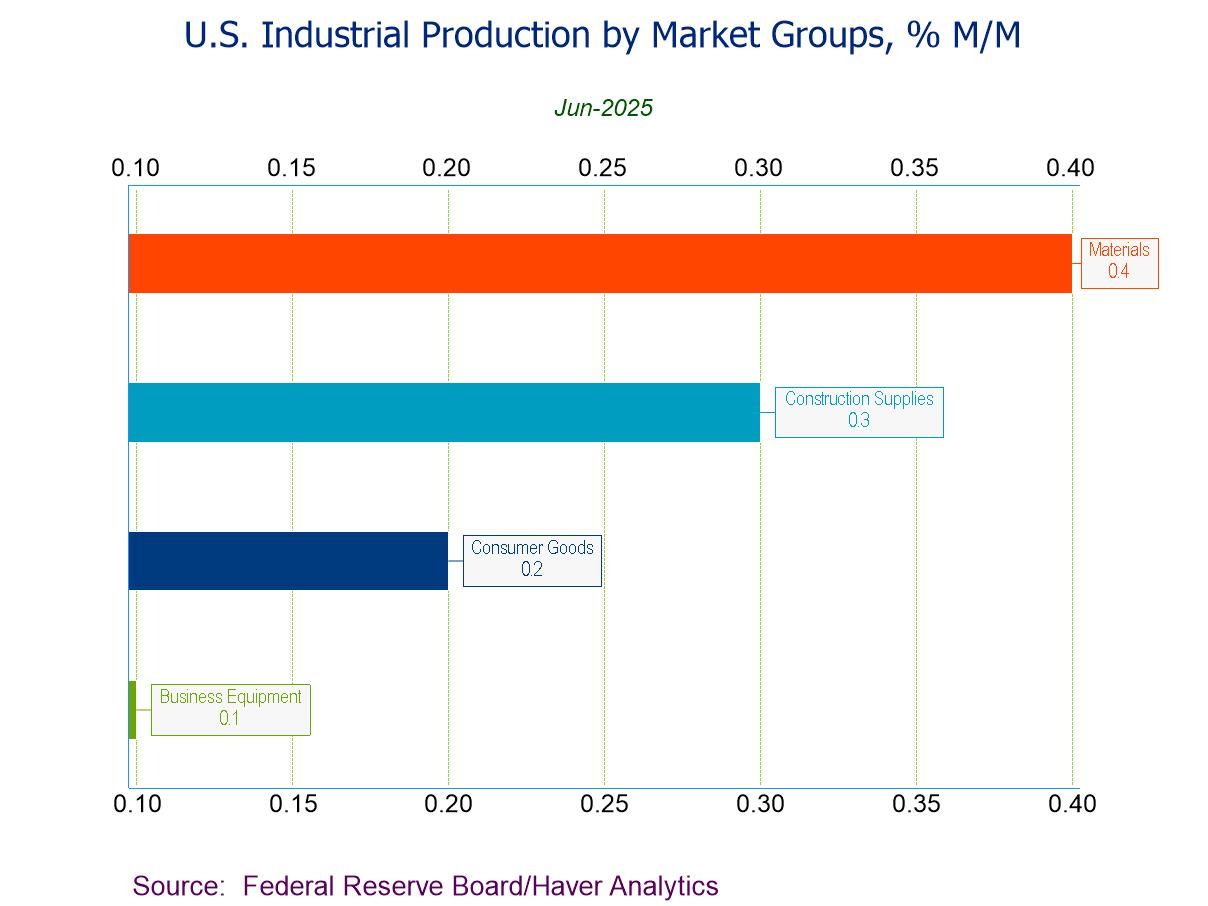
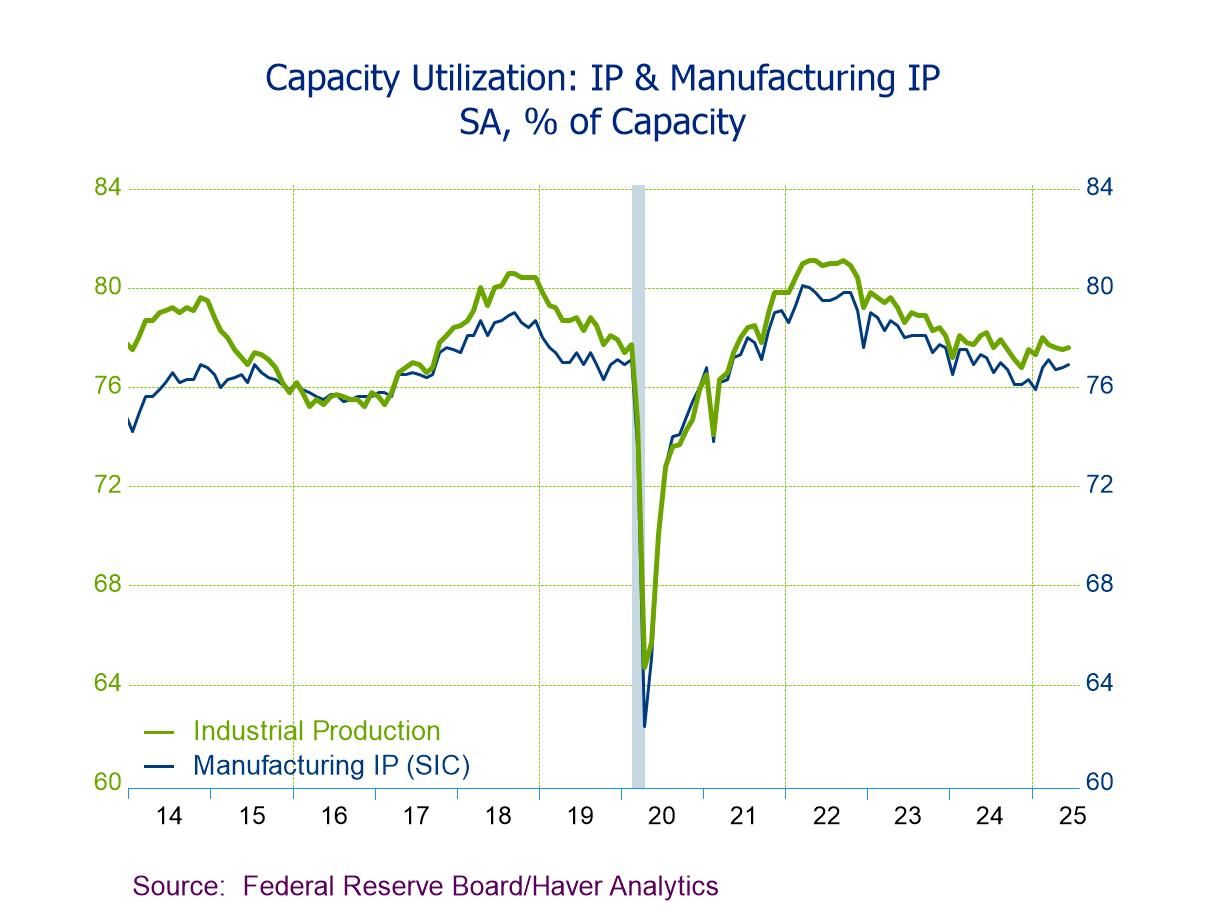
Winnie Tapasanun
AuthorMore in Author Profile »Winnie Tapasanun has been working for Haver Analytics since 2013. She has 20+ years of working in the financial services industry. As Vice President and Economic Analyst at Globicus International, Inc., a New York-based company specializing in macroeconomics and financial markets, Winnie oversaw the company’s business operations, managed financial and economic data, and wrote daily reports on macroeconomics and financial markets. Prior to working at Globicus, she was Investment Promotion Officer at the New York Office of the Thailand Board of Investment (BOI) where she wrote monthly reports on the U.S. economic outlook, wrote reports on the outlook of key U.S. industries, and assisted investors on doing business and investment in Thailand. Prior to joining the BOI, she was Adjunct Professor teaching International Political Economy/International Relations at the City College of New York. Prior to her teaching experience at the CCNY, Winnie successfully completed internships at the United Nations. Winnie holds an MA Degree from Long Island University, New York. She also did graduate studies at Columbia University in the City of New York and doctoral requirements at the Graduate Center of the City University of New York. Her areas of specialization are international political economy, macroeconomics, financial markets, political economy, international relations, and business development/business strategy. Her regional specialization includes, but not limited to, Southeast Asia and East Asia. Winnie is bilingual in English and Thai with competency in French. She loves to travel (~30 countries) to better understand each country’s unique economy, fascinating culture and people as well as the global economy as a whole.



